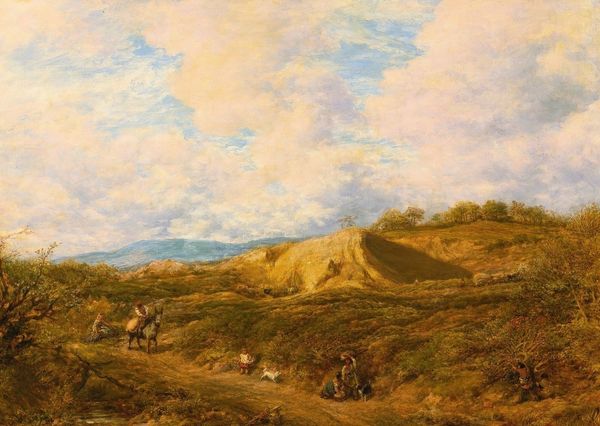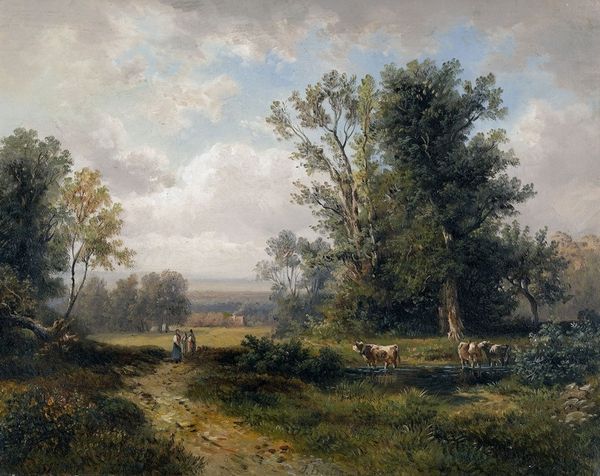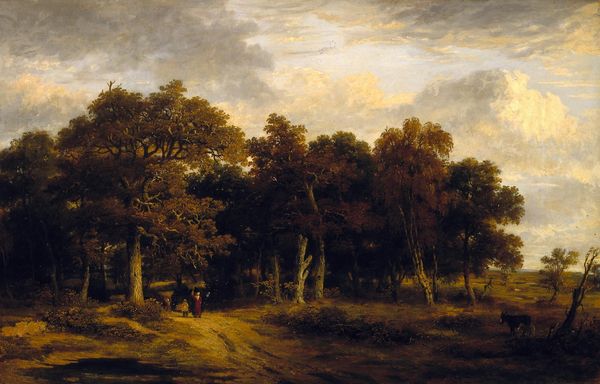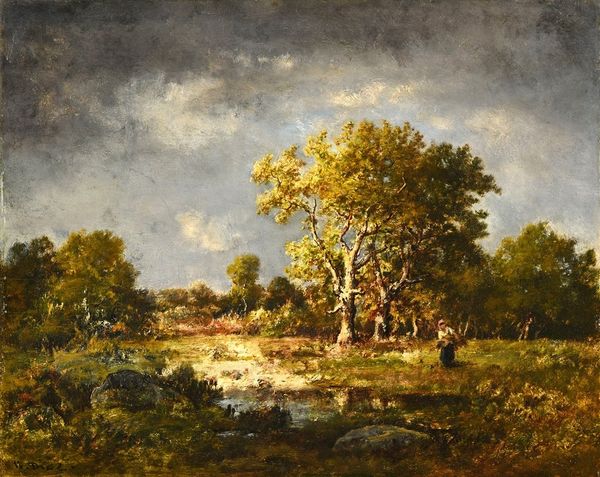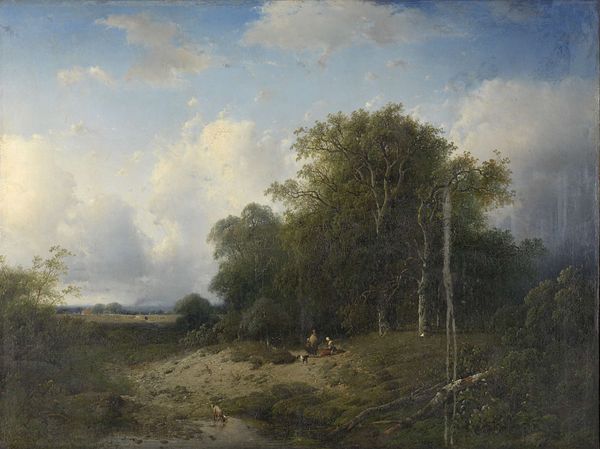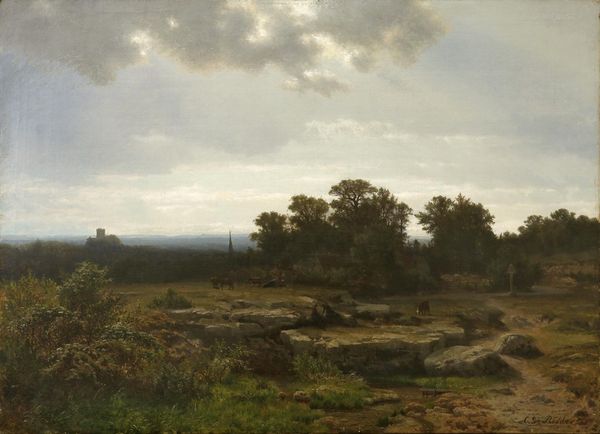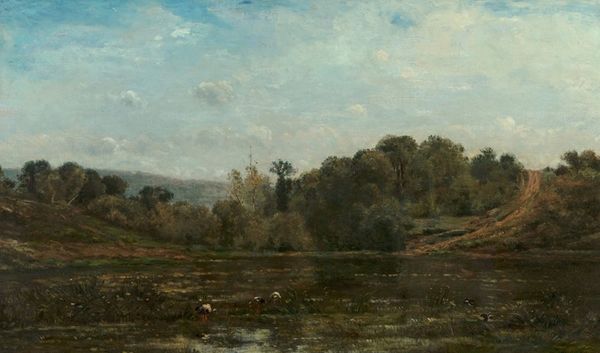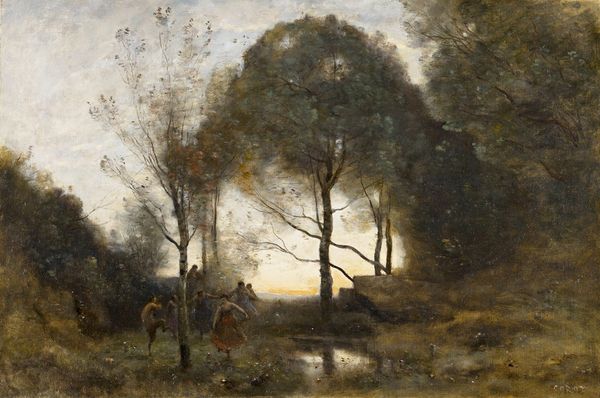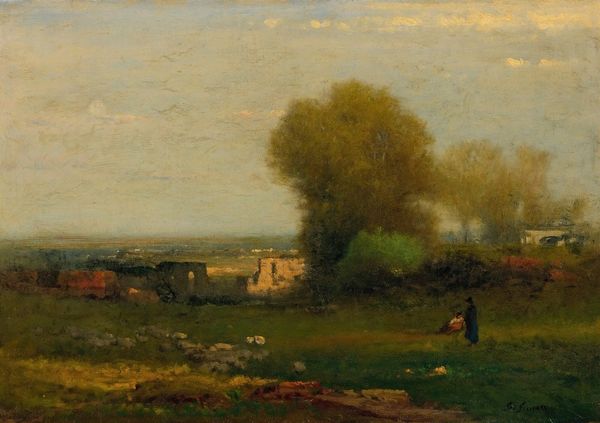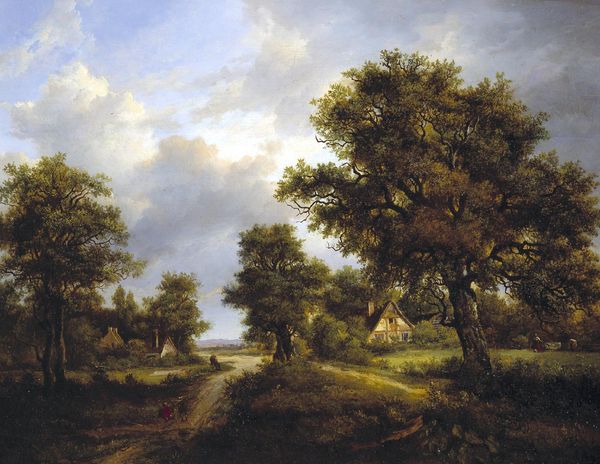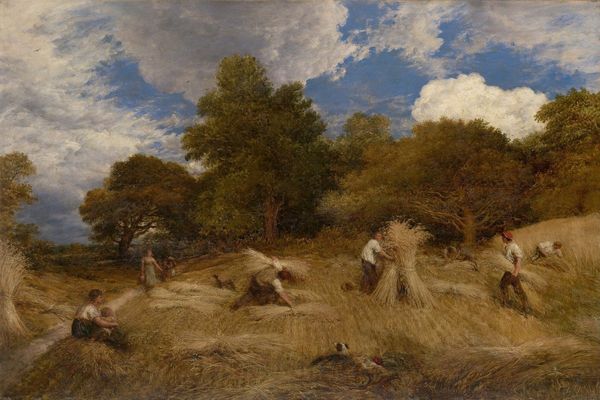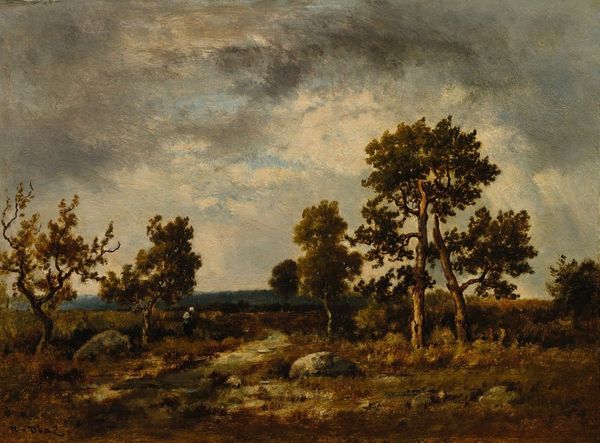
painting, oil-paint
#
painting
#
oil-paint
#
landscape
#
impressionist landscape
#
figuration
#
oil painting
#
romanticism
#
genre-painting
#
realism
Copyright: Public Domain: Artvee
Curator: Immediately striking; the heavy brushstrokes imbue the clouds with an almost palpable sense of weight. Editor: Here we have John Linnell’s "An English Landscape". While undated, it exemplifies his adherence to rural genre painting—a style he embraced to portray everyday life. Curator: It’s the way the light filters—or perhaps struggles to filter—through those massive clouds that I find so compelling. There's an underlying tension between the figures laboring on the dirt path and the expanse of the sky looming overhead. The composition is balanced through asymmetry. The eye is naturally drawn upward by that path, the buildings lining its route offering a counterpoint to the figures below. Editor: Yes, and consider Linnell's social standing and its reflection in his landscapes. He actively participated in debates on poverty and the laboring classes. You can observe it in the representation of rural communities: notice the workers diligently laboring to move something with the wheelbarrow; the painting reflects both an intimate observation and also, it idealizes these workers by linking them with an idealized version of the landscape. Curator: The impasto, applied with a vigorous hand, captures the rawness of the earth. Note that this tactile quality makes the labor visually tangible; that you recognize that his social beliefs align him more to Realism or naturalism is interesting here, since it could equally feel closer to the Romantics; is the artist commenting that this labor brings humans closer to the soil and nature, maybe closer to God too? Editor: He was undoubtedly invested in the era's changing relationship to the land brought about by industrial developments. He chose instead to focus on laboring activities within an intimate rural setting. A view undoubtedly skewed through an idealistic lens from the elite classes. Curator: A potent dialogue of materiality and mood; I now see both the socio-political commentary, while simultaneously recognizing a very conscious formalistic study. Editor: Indeed. It also gives us a valuable perspective on 19th-century England and the lens through which its landscapes were viewed and recorded.
Comments
No comments
Be the first to comment and join the conversation on the ultimate creative platform.
